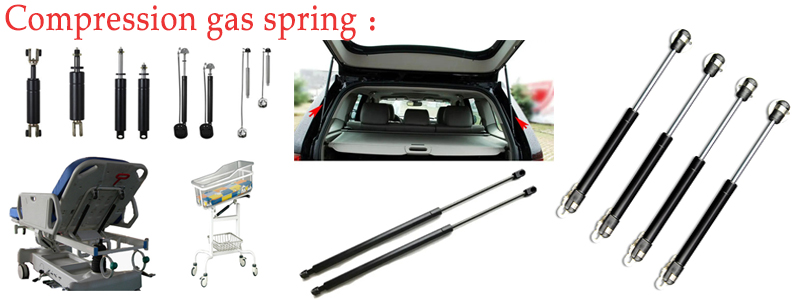Structural principle of compression gas spring:
It is mainly deformed by the force generated by gas compression. When the force on the spring is large, the space inside the spring will shrink, and the air inside the spring will be compressed and squeezed. When the air is compressed to a certain extent, the spring will generate elastic force. At this time, the spring will be affected by the elastic force, and it will be able to return to the shape before deformation, that is, to the original state. The compression air spring can play a very good supporting role, as well as a very good buffering and braking role. Moreover, the special compressed air spring can also play a very powerful role in angle adjustment and shock absorption.
Usage method:
1. To input a certain amount of air into the compression gas spring, the specific input amount needs to be determined according to the different models of the spring, which are clearly described in the instructions of the compression gas spring. Therefore, before using the compression gas spring, carefully read the instructions of the compression gas spring.
2. After filling the air, we will put the compressed air spring to the position where it needs to be used. If it is needed to support something, it needs to be placed under the object to be supported.
3. If you need to use it to shock absorption or change the angle, you need to carefully measure the deformation degree and angle change parameters, and determine the position according to the parameters. Place the force bearing rod of the compression gas spring under the object to ensure that the compression gas spring can bear the force vertically or in parallel, so that the compression gas spring can be put into use.
Post time: Oct-17-2022




